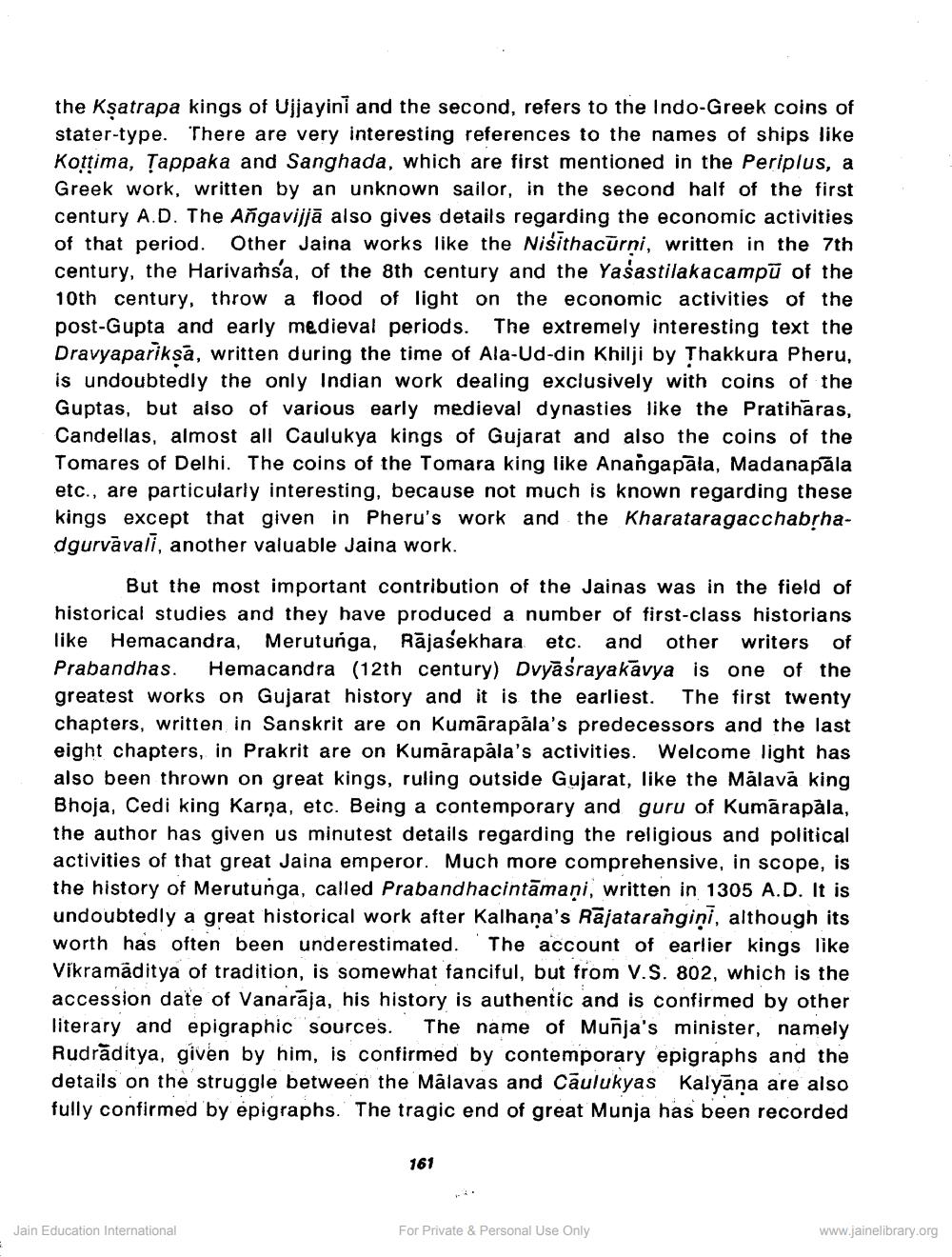Book Title: Contribution of Jainism to Indian History Author(s): A K Chateerjee Publisher: Z_Shwetambar_Sthanakvasi_Jain_Sabha_Hirak_Jayanti_Granth_012052.pdf View full book textPage 5
________________ the Ksatrapa kings of Ujjayini and the second, refers to the Indo-Greek coins of stater-type. There are very interesting references to the names of ships like Kottima, Țappaka and Sanghada, which are first mentioned in the Periplus, a Greek work, written by an unknown sailor, in the second half of the first century A.D. The Angavijjā also gives details regarding the economic activities of that period. Other Jaina works like the Nisithacūrni, written in the 7th century, the Harivaṁsa, of the 8th century and the Yasastilakacampū of the 10th century, throw a flood of light on the economic activities of the post-Gupta and early medieval periods. The extremely interesting text the Dravyapariksa, written during the time of Ala-Ud-din Khilji by Thakkura Pheru, is undoubtedly the only Indian work dealing exclusively with coins of the Guptas, but also of various early medieval dynasties like the Pratihāras, Candellas, almost all Caulukya kings of Gujarat and also the coins of the Tomares of Delhi. The coins of the Tomara king like Anangapāla, Madanapala etc., are particularly interesting, because not much is known regarding these kings except that given in Pheru's work and the Kharataragacchabrhadgurvavali, another valuable Jaina work. But the most important contribution of the Jainas was in the field of historical studies and they have produced a number of first-class historians like Hemacandra, Merutunga, Rājasekhara etc. and other writers of Prabandhas. Hemacandra (12th century) Dvyasrayakavya is one of the greatest works on Gujarat history and it is the earliest. The first twenty chapters, written in Sanskrit are on Kumārapāla's predecessors and the last eight chapters, in Prakrit are on Kumārapala's activities. Welcome light has also been thrown on great kings, ruling outside Gujarat, like the Malavā king Bhoja, Cedi king Karma, etc. Being a contemporary and guru of Kumarapala, the author has given us minutest details regarding the religious and political activities of that great Jaina emperor. Much more comprehensive, in scope, is the history of Merutunga, called Prabandhacintamani, written in 1305 A.D. It is undoubtedly a great historical work after Kalhana's Rājatarangini, although its worth has often been underestimated. The account of earlier kings like Vikramaditya of tradition, is somewhat fanciful, but from V.S. 802, which is the accession date of Vanarāja, his history is authentic and is confirmed by other literary and epigraphic sources. The name of Muñja's minister, namely Rudrāditya, given by him, is confirmed by contemporary epigraphs and the details on the struggle between the Mālavas and Caulukyas Kalyāna are also fully confirmed by epigraphs. The tragic end of great Munja has been recorded 161 Jain Education International For Private & Personal Use Only www.jainelibrary.orgPage Navigation
1 ... 3 4 5 6 7
